Found 17 Results
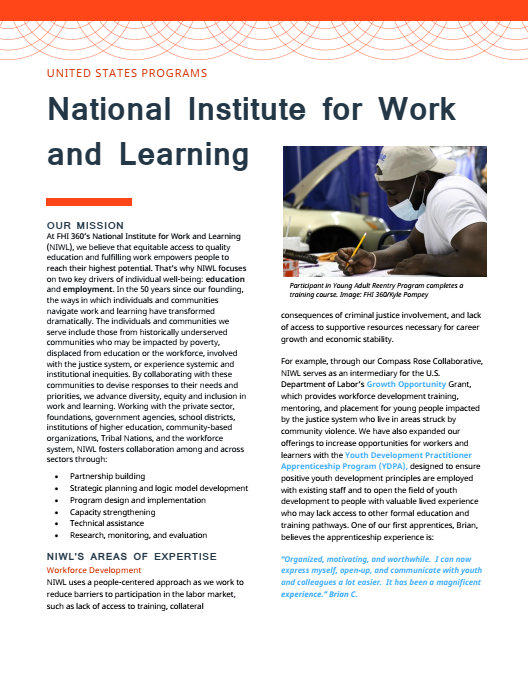
National Institute for Work and Learning (NIWL) Fact Sheet
This fact sheet profiles the work of FHI 360’s National Institute for Work and Learning (NIWL), which focuses on two key drivers of individual well-being: education and employment.
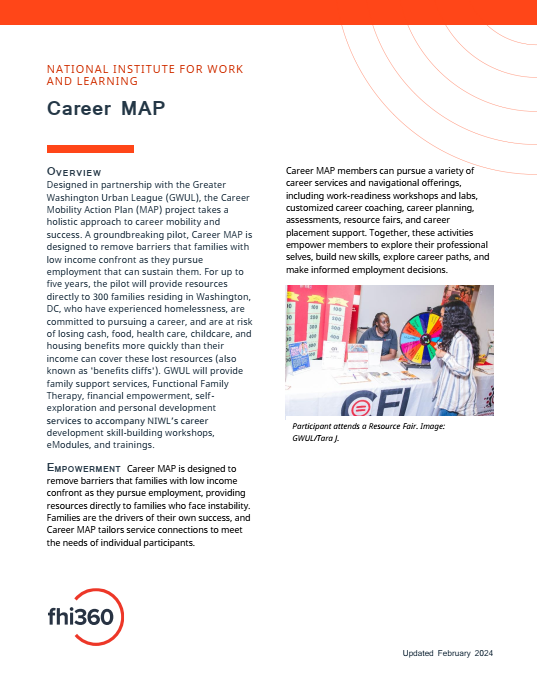
Career MAP Overview
Designed in partnership with the Greater Washington Urban League (GWUL), the Career Mobility Action Plan (MAP) project takes a holistic approach to career mobility and success. A groundbreaking pilot, Career MAP is designed to remove barriers that families with low income confront as they pursue employment that can sustain them.
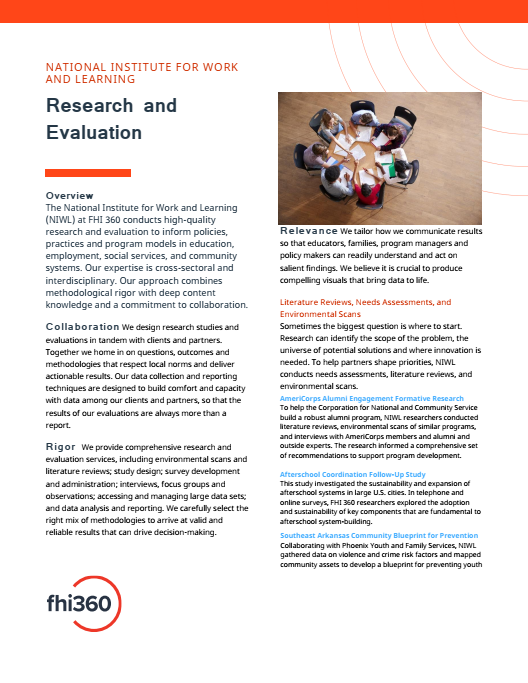
Research & Evaluation Fact Sheet
The National Institute for Work and Learning (NIWL) at FHI 360 conducts high-quality research and evaluation to inform policies, practices and program models in education, employment, social services, and community systems. Our expertise is cross-sectoral and interdisciplinary. Our approach combines methodological rigor with deep content knowledge and a commitment to collaboration.
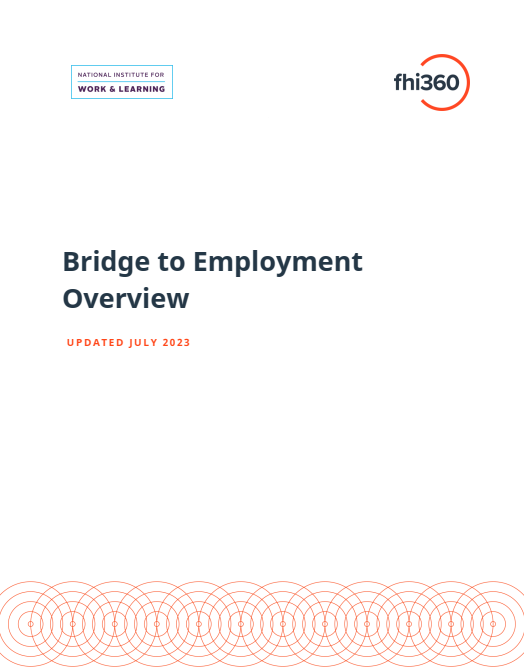
Bridge to Employment Fact Sheet Overview
Launched by Johnson & Johnson in 1992, Bridge to Employment (BTE) inspires young people (14 to 18 years old) to stay in school, excel academically, and elevate their career aspirations. This fact sheet is an overview of the BTE initiative, NIWL’s role, key data and evaluation results.
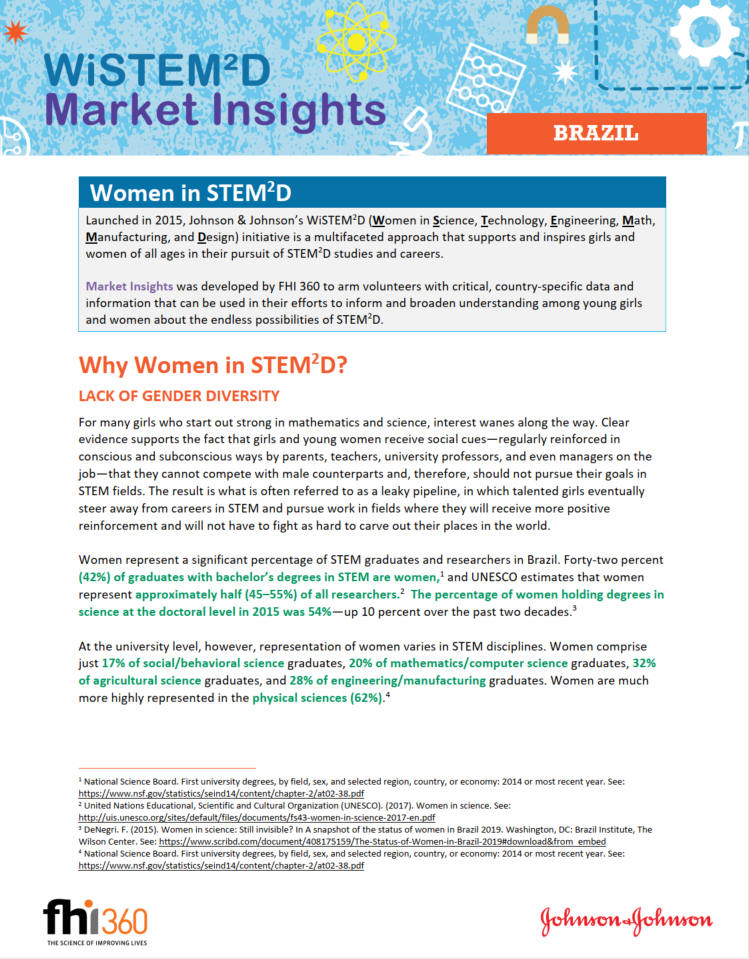
STEM2D Market Insights
Critical, country-specific data and information about the growing demand for STEM²D talent and the status of a diverse talent pipeline. Customized Market Insights are available for countries throughout Africa, Asia, Europe, Middle East, North America, Latin America, and South America. Click your language below to download the PDF for the country of your choice.
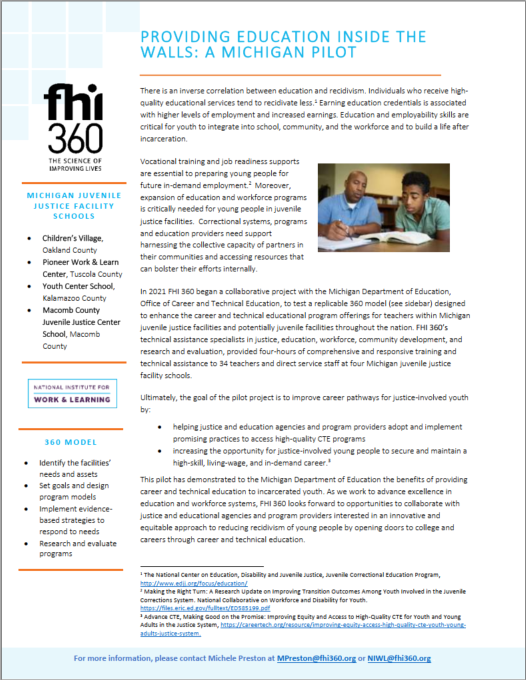
Providing Education Inside the Walls: A Michigan Pilot
In 2021 FHI 360 began a collaborative project with the Michigan Department of Education, Office of Career and Technical Education, to test a replicable 360 model designed to enhance the career and technical educational program offerings for teachers within Michigan juvenile justice facilities and potentially juvenile facilities throughout the nation. FHI 360’s technical assistance specialists […]

NIWL 2020 Year In Review
This highlights the work and success of NIWL programming in 2020.
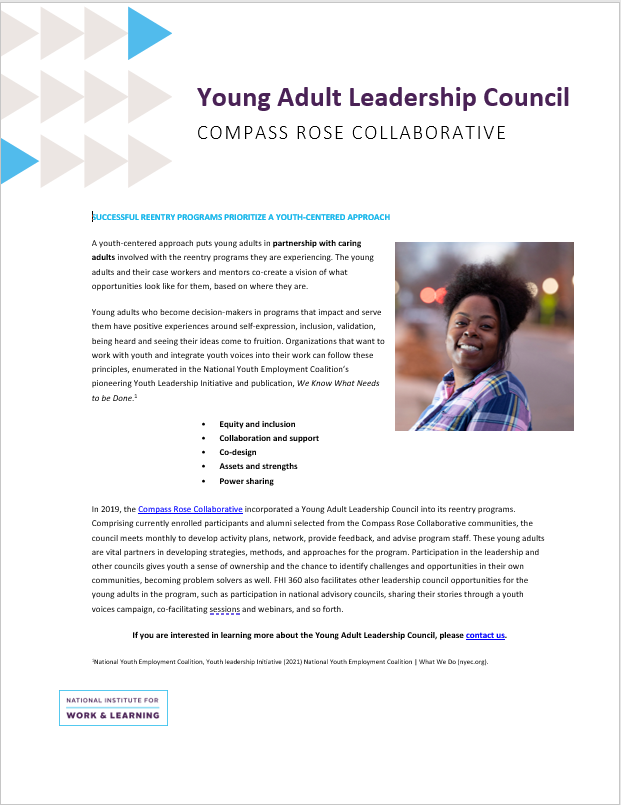
Compass Rose Collaborative Young Adult Leadership Council Information Sheet
Launched in 2019, the Young Adult Leadership Council is a key component of NIWL’s Compass Rose Collaborative, a young adult reentry program. This program combines the principles of youth-adult partnerships with reentry programming.

The Show Must Go On: FHI 360’s Alliance Building and Training Session (ABTS) As A Model Online 3-day Event
This document provides a brief overview of NIWL’s capabilities as it relates to pivoting in person conferences to engaging virtual events
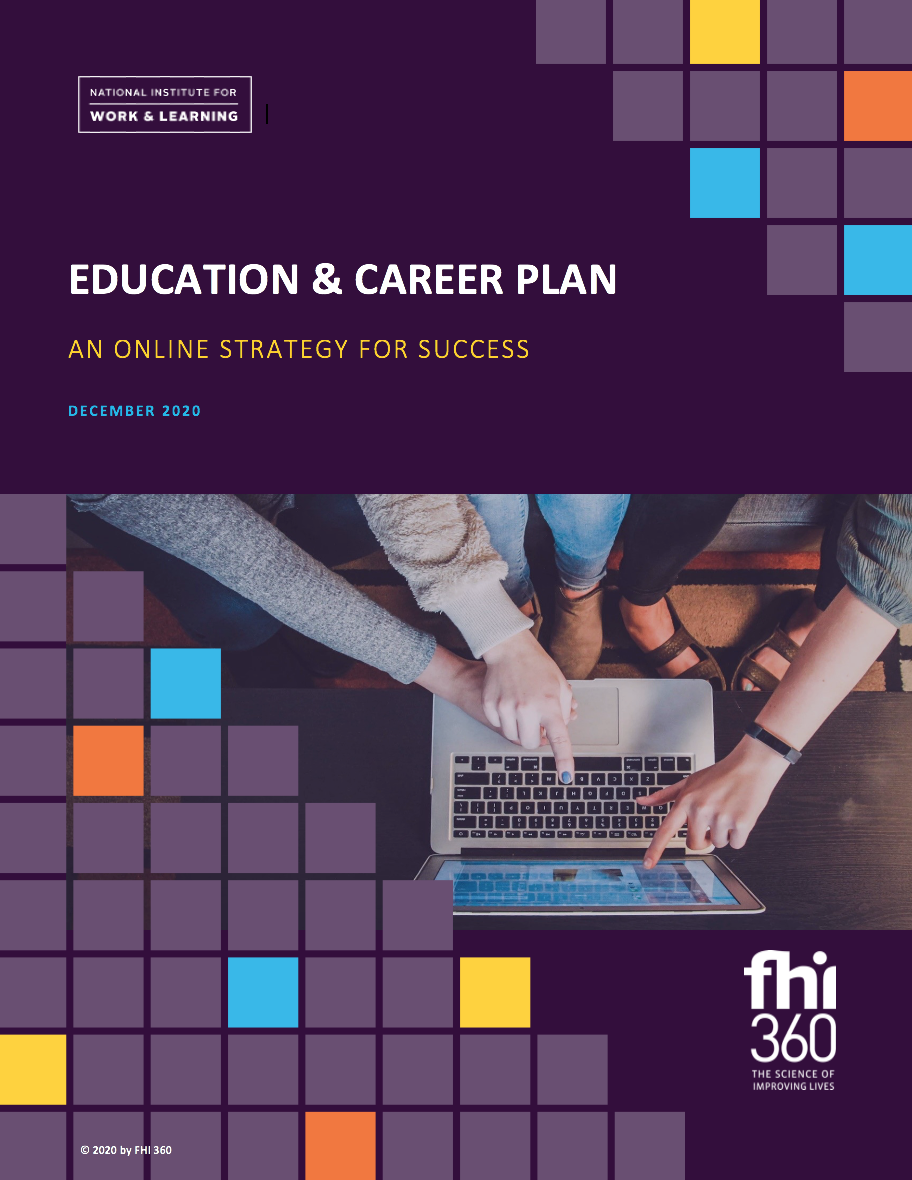
Education and Career Plan Overview
The Education & Career Plan (ECP) is a user-friendly digital tool that builds on FHI 360’s College and Career Readiness: A Guide for Navigators, which helps both students and Navigators map and track the college- and career-readiness journey. Four versions of the ECP are available, designed to support students pursuing different paths: those in high […]
